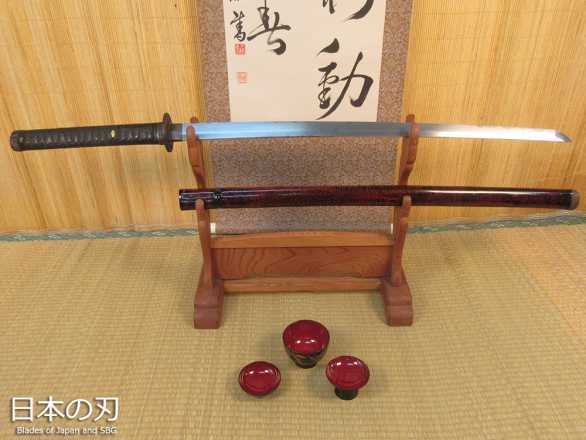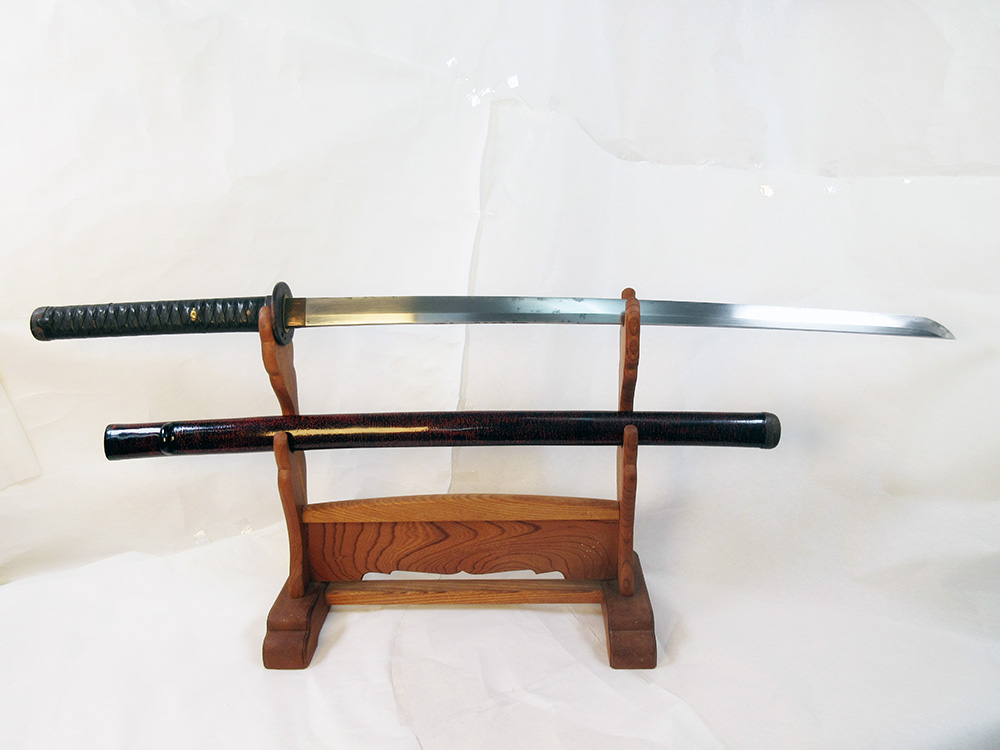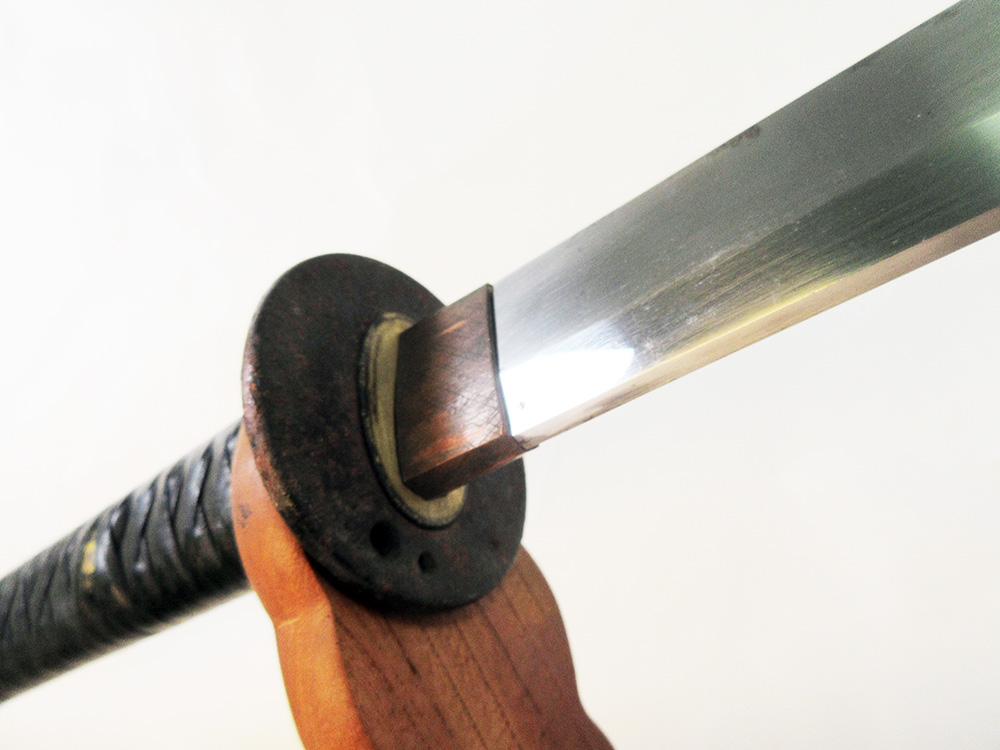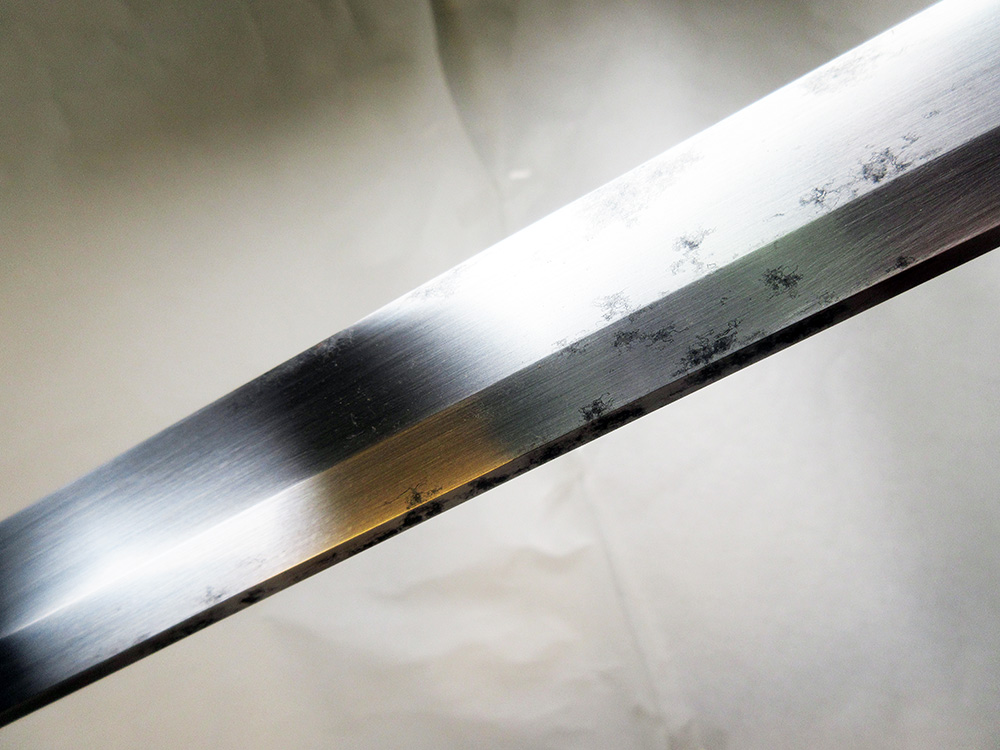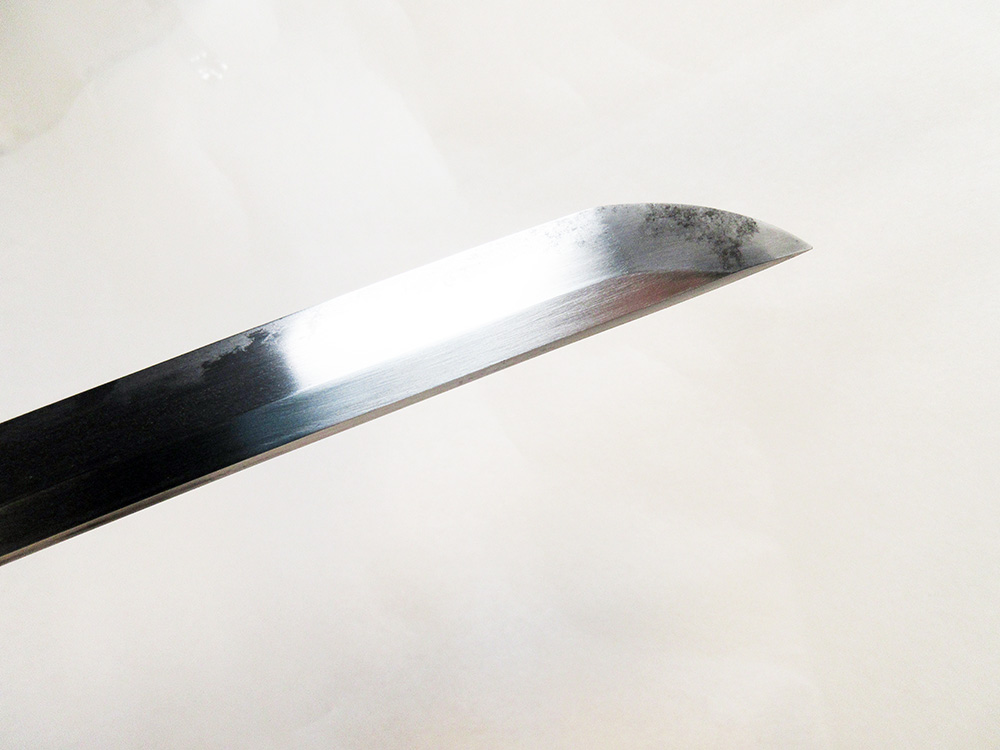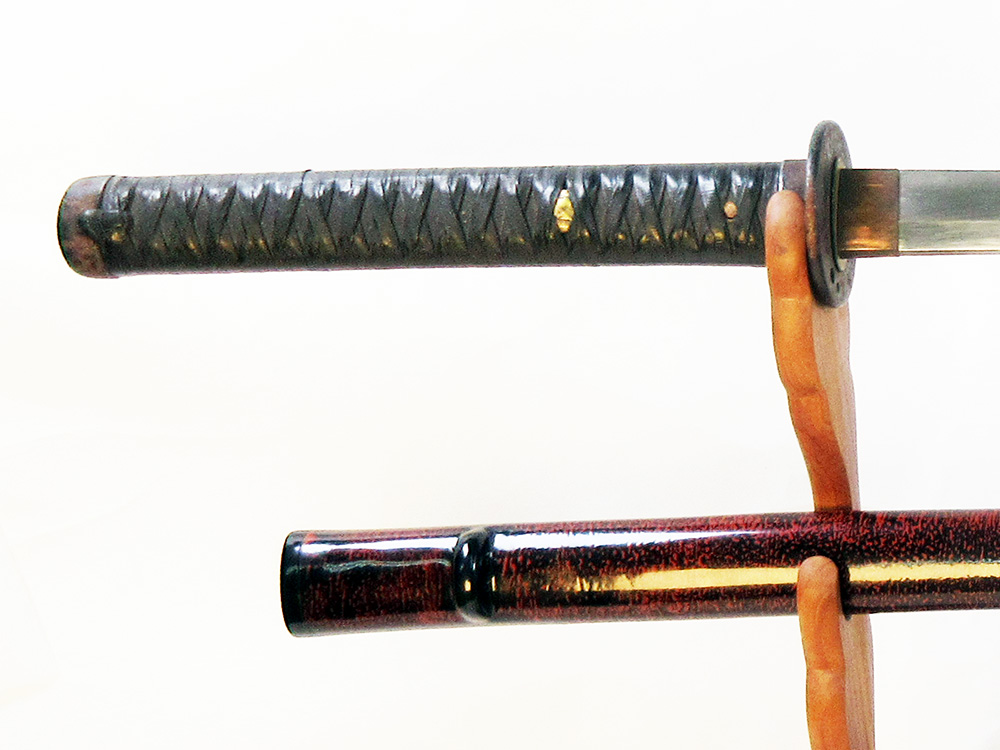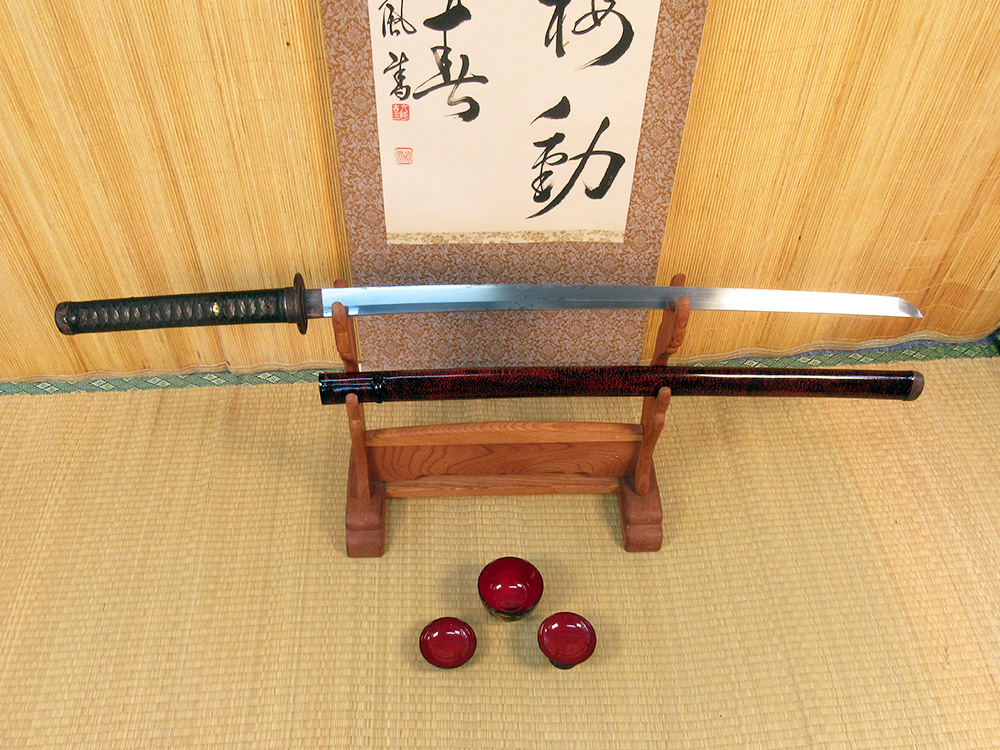BoJ Katana #002: Antique Fujiwara Nagayoshi 83356
 Be the first one to write a review
Be the first one to write a reviewONLY ONE AVAILABLE
Genuine Antique 19th century Katana with original leather braid ito made approx 1850 towards the turbulent end of the Edo period by Fujiwara Nagayoshi of Bishu-ju (Aichi prefecture). Unrestored and in original condition, it appears to be a practical training sword used in a dojo.
FREE WORLDWIDE SHIPPING: Shipped Directly From Japan and includes all certificates of authenticity.
During the peaceful times of the early to mid Edo period, the Katana started to become something of a status symbol and fashion accesory as much as it was a weapon of war. But during the period this particular piece was made in, Japan once again spilled her blood as the Edo period came crashing down and the Samurai were swept away in the rapid modernization of the Meiji restoration to follow.
As such, this is not an art sword - it was clearly designed for fighting.
The fittings are simple and austere - somewhat worn and clearly heavily used black leather for a tight grip even in rain or when one's hands are soaked in blood. Iron fittings instead of ornate copper for maximum functionality and strength. Even the blade itself is quite wide and thick (3.2cm at its thickest) with low (Asa-sori) curvature and tough armor piercing chugissaki tip.
The hamon too is the easiest and fastest to produce - as well as one of the most functional - the straight suguha hamon with a basic low grade polish instead of 'kessho' to bring out all the details in the steel. So clearly this was not an art sword, it was either a training sword or a sword made relatively quickly for immediate use as the world of the Samurai started to crash down around them..
In its current condition, the blade has several spots marred by dark patina, whose origin suggests it is likely leftover residue from cutting tatami mats and it may never have actually been used, serving perhaps as a utilitarian training sword for the dojo to practice tameshigiri.
With both hamon and hada obscured and hard to see from surface scratches, some rust and remaining residue - this sword could benefit from a new polish.
There are no indications of battle damage, though this does not mean that it was never raised in anger, only that there are no visible marks indicating that it had made contact with another blade or damaging target of any type.
This blade comes with no additional information or certification other than the official registration card (Juho-token-tui-torokusho) issued by the board of education. By Japanese law, this registration paper must accompany the sword at all times unless it is shipped outside of Japan, whereupon it serves as a certificate of authenticity (as only traditionally made blades using Tamahagane can be registered - for more information on the process involved click here).
Under normal circumstances a papered antique blade fully mounted in its original fittings like this one would sell for close to $8-9,000 but due to tough economic conditions negatively effecting antique sword prices in Japan, the heavy discount available to us is passed on to you - allowing you to pick it up for a fraction of its full value.

